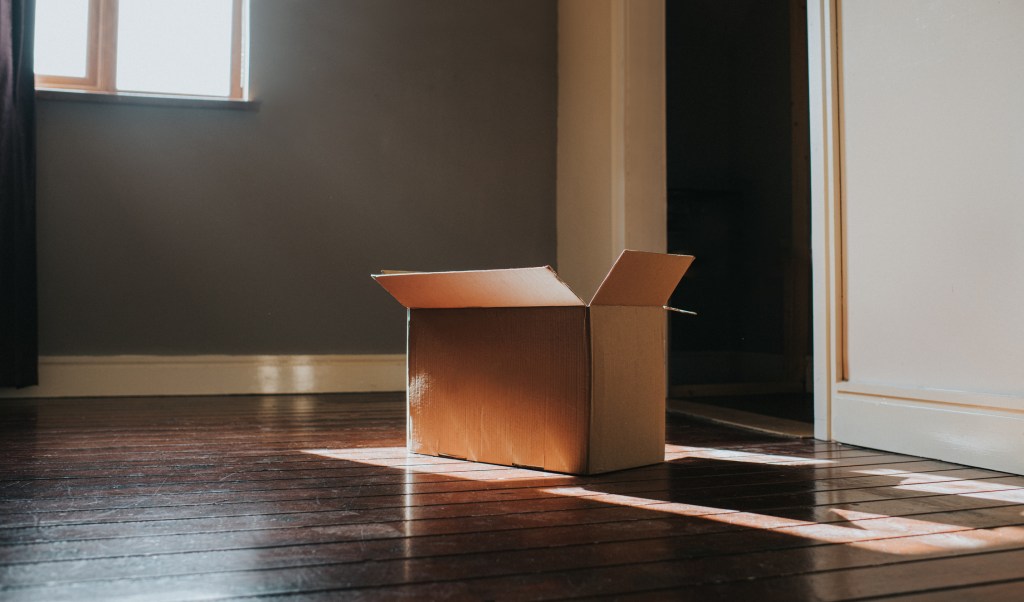Wood and rope may not be your materials of choice if asked to visually portray the urban landscape of New York, but for Brooklyn-based artist Senem Oezdogan, natural fibers provide an ideal medium. Inspired by the Bauhaus School’s marriage of craft with visual art, Oezdogan translates her urban environment by freely weaving geometric patterns; balancing a textured canvas with careful additions of color and form. A graduate of FIT’s Communication Design and Illustrations programs, Oezdogan’s work brings a modern aesthetic to the movement’s iconic teachings.
Growing up in south Germany, Oezdogan spent much of her time creating objects rooted in both functionality and aesthetics. Her awareness and interest in the relationship between visible and utilitarian value emerged from these early experiences, informing her movement towards the Bauhaus ethos of creation. Drawn specifically to the school’s focus on connecting various disciplines, Oezdogan was inspired by the school’s liberal structure, and its encouragement of students to experiment within an array of materials and practices.
Videos by VICE
While the Bauhaus movement predominantly conjures up associations with its 20th century German zenith, Oezdogan’s work provides testament to the timelessness and applicability of the school’s ideology and teachings. Informed by theorists ranging from Josef Albers to Paul Klee, Oezdogan notes Albers’ color theory and Klee’s theories on art and design as being especially influential to her work. Klee’s teaching, for example, encourages his students “not to imitate nature and objects, but to observe the process that shaped and created them.”

Construction/ Pillars I
In the age where we unconsciously and constantly archive our surroundings with our cell phone cameras, Oezdogan appreciates the school’s logic as “ a fascinating way to look at our surroundings, study form and shape [without] being too literal when using visual language.” This is precisely the impetus behind the artist’s fiber art works. Drawing inspiration from New York’s urban landscape, Oezdogan translates the city’s built environment using geometric abstraction instead of a literal appropriation of the city’s portraiture.
Harmonizing the inherent tensions within the fibers themselves, Oezdogan’s material choices soften the city’s form, while retaining its geometric integrity. Choosing to work freely, without the constraints of a loom or a fixed grid, Oezdogan approaches the works from all sides, creating the room to “visualize depth, flatness, tension, and structure- combining them into an arrangement of shapes and compositions that feel complete and harmonious.”
Her most recent project consists of a painting series inspired by Martha Graham’s modern dance choreographies.“ I love her way of translating emotional experiences into physical form–a process I think that is very similar to abstract art.” Maintaining this very commitment to abstraction, Oezdogan’s paintings skillfully make use of form, light, and shadow, embodying the fluidity and movement inherent in Graham’s works.

Deux/ Forward
For Oezdogan, maintaining visual harmony is a priority—a theme that unites her paintings and fiber art. The works balance color and form perfectly, paying each aspect due respect. While the visual works translate sentiments of minimalism, her work is rich in both texture and depth. Her current style however, is indisputable. Bauhaus is most definitely back.
To see more of Oezdogan’s works, visit her website, here.
Related:
3D Weaving Blurs the Lines Between Fashion and Sculpture
Architects Design a Performative Bauhaus Museum Concept
Weaving the Future of Textiles with Google’s Project Jacquard



